Last Updated on October 21, 2023 by Pro Handyman Australia – Editorial Team
Home improvement projects can be exhilarating, providing homeowners with a canvas to paint their aspirations and mold their spaces into tangible reflections of their tastes. However, amidst the excitement, there’s a crucial and often challenging task: budgeting. Among the myriad elements that go into turning a house into a home, drywall installation stands as both foundational and transformative. A seamless drywall job sets the tone for the rest of your space, both functionally and aesthetically. But how much does it cost? What factors affect these costs? And how can one optimize their budget without compromising on quality? Welcome to our comprehensive guide on Drywall Installation Cost Estimates, where we delve deep into understanding the intricacies of drywall costs, providing you with insights, averages, and valuable pointers to plan your next home project efficiently. Whether you’re a seasoned homeowner or a first-time renovator, this guide aims to equip you with the knowledge you need to make informed decisions, ensuring your walls are not just structures, but stories waiting to unfold.
Scope of Basic Drywall Installation Estimates
These cost approximations are designed for basic tasks carried out under normal circumstances by proficient industry professionals using mid-tier materials. Please note:
- The estimates encompass standard tasks. Projects that involve master craftsmanship, high-quality materials, and additional oversight will inevitably lead to increased costs.
- Always prioritize getting detailed written quotations from qualified professionals. This not only gives you an accurate idea of the costs but also ensures clarity in work expectations. Engaging industry experts for a precise evaluation of the work and associated costs for your specific project is highly advisable before finalizing any arrangements.
What’s Included in the Cost Estimate?
The provided estimate for drywall installation generally covers:
- Charges related to transporting materials and equipment to the site and facilitating the commute of service providers to and from the location.
- Expenses linked to preparing the site for drywall installation. This includes measures to shield existing structures, finishes, and other materials from potential damage.
- The compensation for labor, factoring in the setup time, time taken for mobilization, and any minimum hourly rates usually charged for minor drywall installation tasks.
Items Not Covered in the Cost Estimate
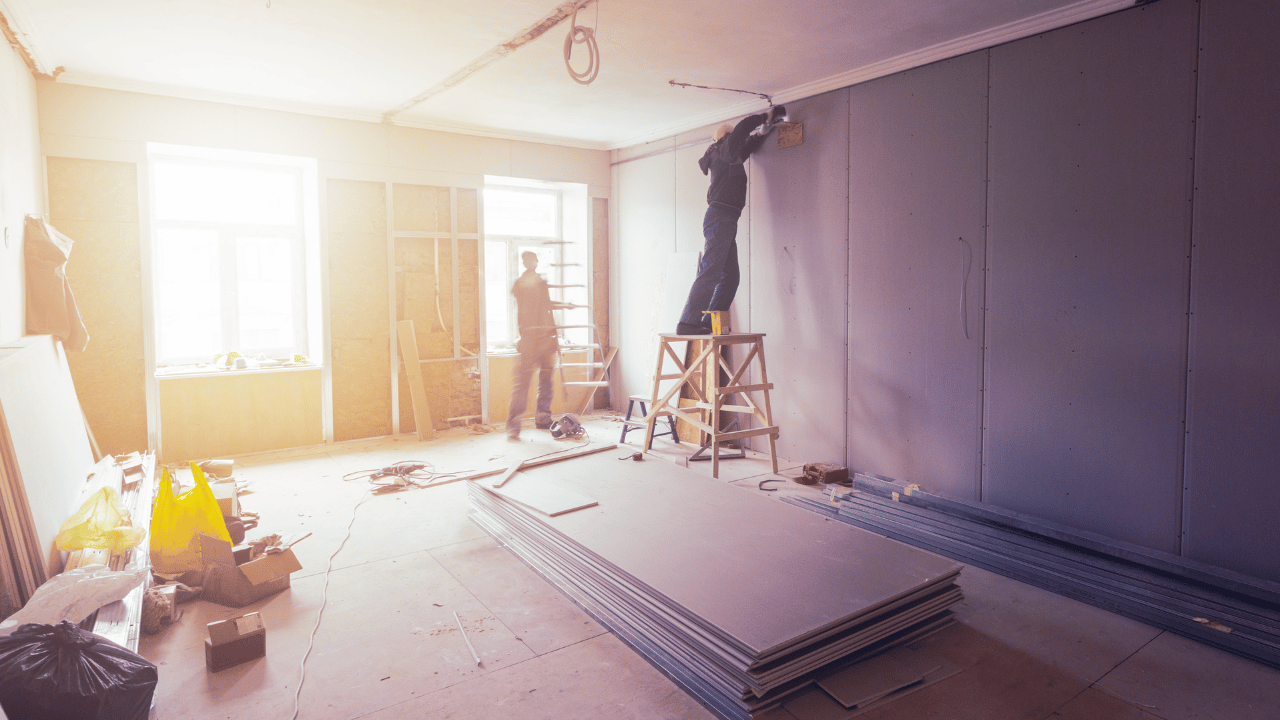
There are specific aspects that this estimate doesn’t cater to:
- Expenses associated with the removal, transfer, repair, or adjustment of existing infrastructure like framing, surfaces, HVAC, electrical setups, and plumbing. This also includes costs related to updating these systems as per current building norms.
- Charges for testing and managing hazardous materials like asbestos or lead.
- Overheads incurred by a general contractor and any additional charges for managing and overseeing the drywall installation process. For projects supervised by a general contractor, you might want to consider adding an additional 13% to 22% to the above-mentioned total estimate.
- The sales tax imposed on materials and supplies.
- Any fees for permits or inspections, either in full or part, as mandated by your local construction authorities.
Factors Influencing Drywall Installation Costs
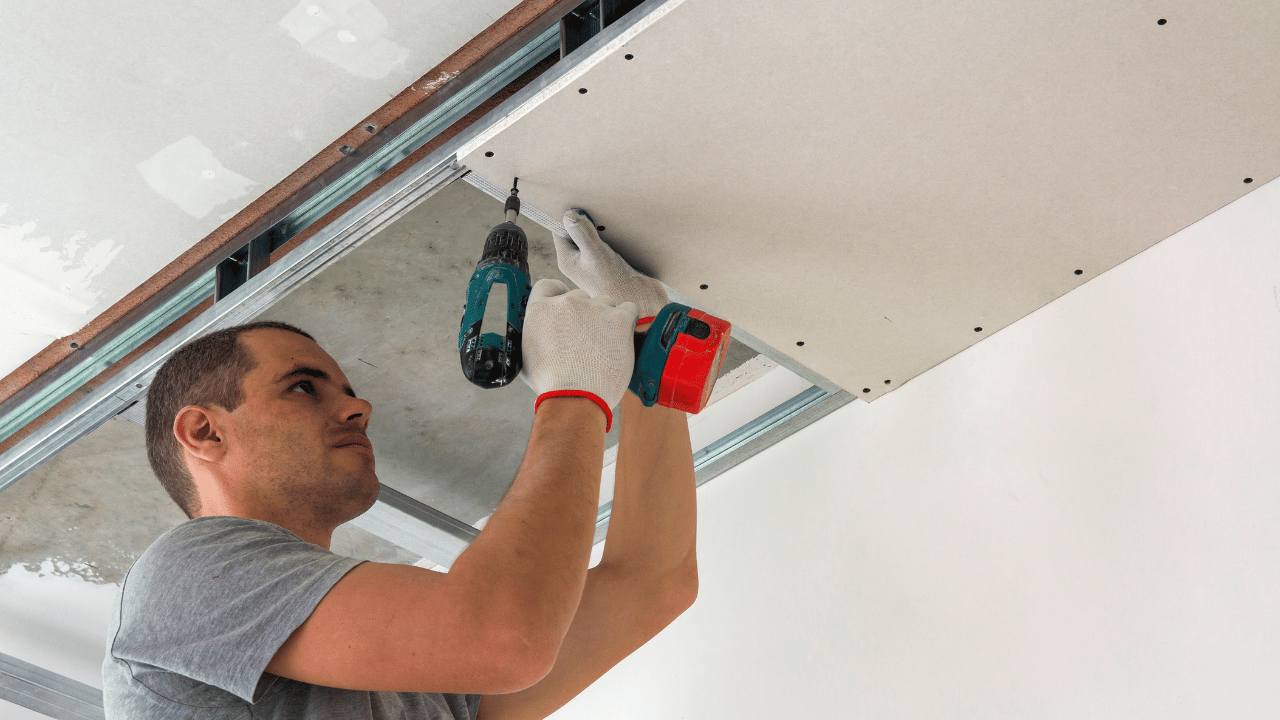
As you embark on home restoration, expansion, or basement conversion projects, one pivotal aspect to consider is drywall installation. The cost for professional drywall installation typically ranges from $50 to $100 per hour, with the average project landing around $2,021. However, the expenses can fluctuate based on several factors, including:
- The dimensions and configuration of the room.
- Your choice of material type and its thickness.
- The level of finish you’re aiming for.
Breakdown: Cost per Square Foot
On average, the comprehensive cost for drywall installation—which includes finishing, taping, labor, and materials—is somewhere between $1.50 and $3 per square foot. Translated to individual drywall panels, this rate equates to about $60 to $90 each. For instance, a standard 12×12 foot room, which would require around 18 panels, might set you back anywhere from $1,000 to $1,600.
It’s worth noting that professional installation usually comes at an hourly rate of $50 to $100. To secure a precise and tailored estimate, consider reaching out to an experienced local drywall contractor. And, for a holistic understanding of the market, it’s wise to get quotes from multiple professionals, allowing you to compare their rates and evaluate their prior work.
Additional Information about Budgeting for Drywall: What Can You Expect?
Understanding what you can achieve within various budgetary constraints can help you set realistic expectations for your drywall project:
- At $500: Suppose you’re looking to clad a newly added small utility room and wish to mask the bare timber. With this budget, you can anticipate basic drywall hanging. However, additional aspects like taping, mud, or finishing might not be covered.
- Around $1,500: This budget should suffice for a regular living room, approximately 200 square feet in size. Assuming you’re not leaning towards premium finishes or top-tier drywall panels, this sum should encompass the entire installation process.
- Close to $5,000: Thinking of revamping a large basement? For an expansive area of around 1,000 square feet, this budget is a reasonable estimate, provided you’re not opting for specialty panels.
- Upwards of $10,000: For basements larger than 1,000 square feet, especially if you’re considering moisture-resistant panels and aiming for an impeccable finish, the drywall installation costs could venture into the $10,000 territory.
Understanding Drywall Installation Costs: A Breakdown by Use Case
Diverse Applications of Drywall Installation Drywall installation by professionals is versatile and can be implemented across various sections of a home, be it individual rooms, basements, garages, ceilings, or even encompassing an entire property.
Ceiling Drywall Costs One must note that the application of drywall on ceilings tends to be more expensive, generally ranging between $2.25 to $3 per square foot. This increased cost is attributed to the challenges presented by ceilings, as they can be harder to work on and finalize compared to other areas.
Garage Drywall Pricing When considering the installation of drywall within a garage, one can expect the expenses to lie between $1,200 to $5,100 for a standard one-car garage, with the exact cost contingent on its size. It’s also important to mention that many contractors opt for thicker or fire-resistant panels when working on garages. Such specialized panels can command prices up to 50% higher than average drywall materials.
The Advantages of Drywall in Home Construction

Overview of Drywall Benefits For decades, homeowners have turned to drywall as their preferred choice when seeking to safeguard their walls, ceilings, and garages. This preference stems not only from its affordability but also from its durability and adaptability to various designs and functions.
Key Features of Drywall:
- Fire Resilience: One of the paramount benefits of drywall is its inherent resistance to fire, offering an added layer of safety to homes.
- Sound Insulation: Homes with drywall installations can enjoy enhanced soundproofing, ensuring a quieter and more private indoor environment.
- Ease of Personalization: Drywall surfaces are not only easy to paint, but they also provide homeowners with the flexibility to customize. Adding textures to the wall, for instance, allows for a unique aesthetic appeal.
- Simple Repair Process: One of the enduring attributes of drywall is the ease with which it can be repaired. Minor damages or dents can be quickly addressed, restoring the wall’s pristine appearance.
Guidelines for Selecting a Drywall Installer
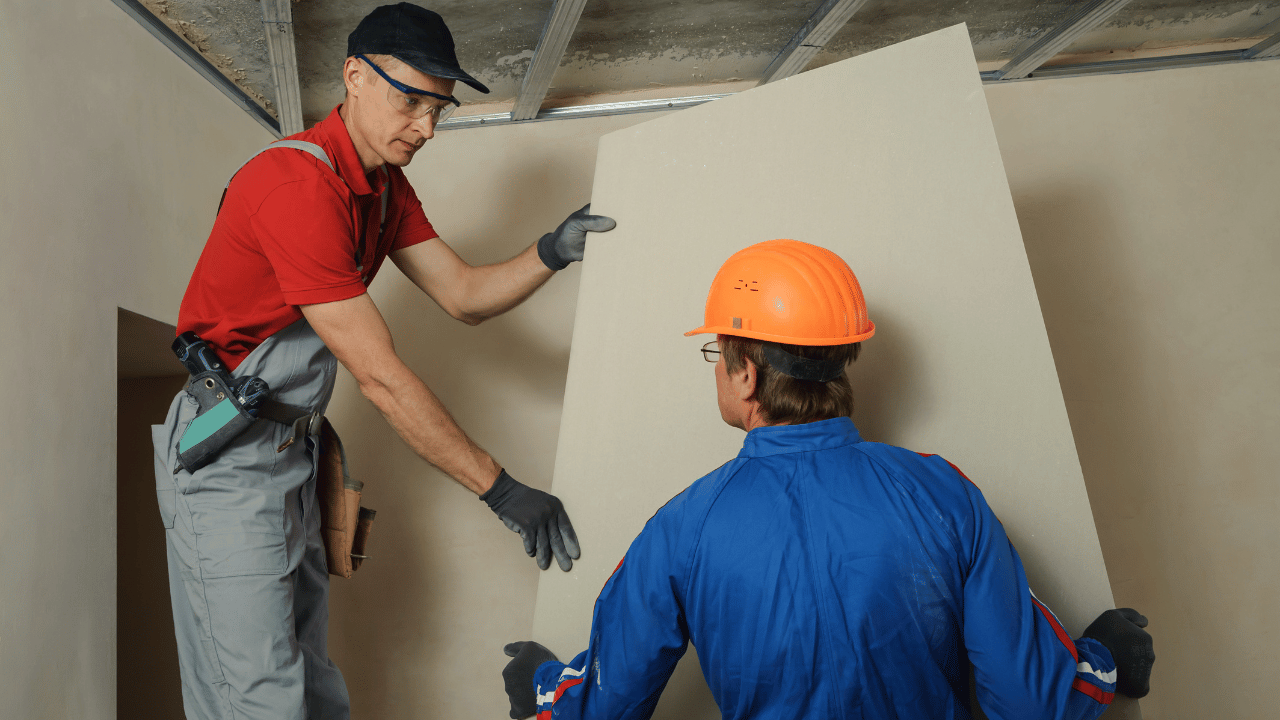
Initiating Your Search When you’re in the market for a proficient drywall installer in your vicinity, it’s essential to undertake the following initial steps:
- Begin by obtaining a minimum of three face-to-face cost estimates. This allows you to draw a comparison and make an informed decision.
- Delve into the feedback and reviews they’ve garnered on platforms like HomeGuide and other popular search engines.
- It’s also advisable to prioritize drywall contractors affiliated with recognized industry bodies, such as the Association of the Wall and Ceiling Industry.
Evaluating Their Professionalism and Experience Beyond initial impressions, take these extra measures to ensure you’re making a well-informed decision:
- Proactively request references and take the time to peruse their portfolio, emphasizing projects akin to your requirements.
- Opt for companies with established reputations, underscored by factors like being licensed, insured, and bonded. A history of at least five years in the business is a good indicator of stability and experience.
Finalizing Your Choice As you near your decision, keep the following pointers in mind:
- Before commencing the project, ensure you receive a comprehensive estimate, a contract, and a written warranty. This not only clarifies expectations but also provides a legal safety net.
- While cost-effectiveness is essential, be wary of quotes that seem exceptionally low. In many cases, a substantially lower price might hint at compromised quality.
- Adopt a financially prudent approach. Refrain from making complete payments upfront. Instead, establish a mutually agreeable payment schedule to ensure both parties remain committed and satisfied throughout the project’s duration.
Key Inquiries for Sheetrock Installers

Verification of Credibility and Competence When contemplating hiring a sheetrock installer, it’s paramount to ascertain their professional credentials:
- Begin by asking whether they hold appropriate licenses and if they are bonded and insured. This is fundamental in safeguarding both parties throughout the installation process.
Understanding Project Execution Dig deeper into the logistics of how the installation will unfold:
- Inquire if the installer’s primary team will be overseeing the project or if there will be involvement of subcontractors.
- Understand the size of the crew that will be deployed and the working hours they adhere to, ensuring it aligns with your expectations and convenience.
Project Specifications and Recommendations Gaining clarity on what precisely the job entails will help in setting clear expectations:
- Ask the installer for their advice regarding the best type of drywall suited for your project and the rationale behind their recommendation.
- Ensure that the provided estimate covers all significant aspects, including the delivery of the drywall material.
- Seek clarity on whether the estimate encompasses all phases of installation, from hanging and taping to mudding, finishing, and even texturing.
Costs, Permits, and Duration An informed client will always delve into the nitty-gritty of the project’s financial and legal aspects:
- Confirm if the estimate they’ve provided includes the cleanup post-installation.
- Ask about the necessary permits, and clarify if the installer will be responsible for securing them.
- Proactively inquire about any ancillary costs that might arise during the project to avoid unexpected expenses.
- Get a realistic timeline for the project’s completion to plan accordingly.
Addressing Potential Issues Preparation is key, and it’s always good to be informed about how potential challenges will be addressed:
- Lastly, discuss the approach they take should any damages or issues arise during the course of the project. It’s essential to know their damage mitigation and rectification procedures.
Frequently Asked Questions:
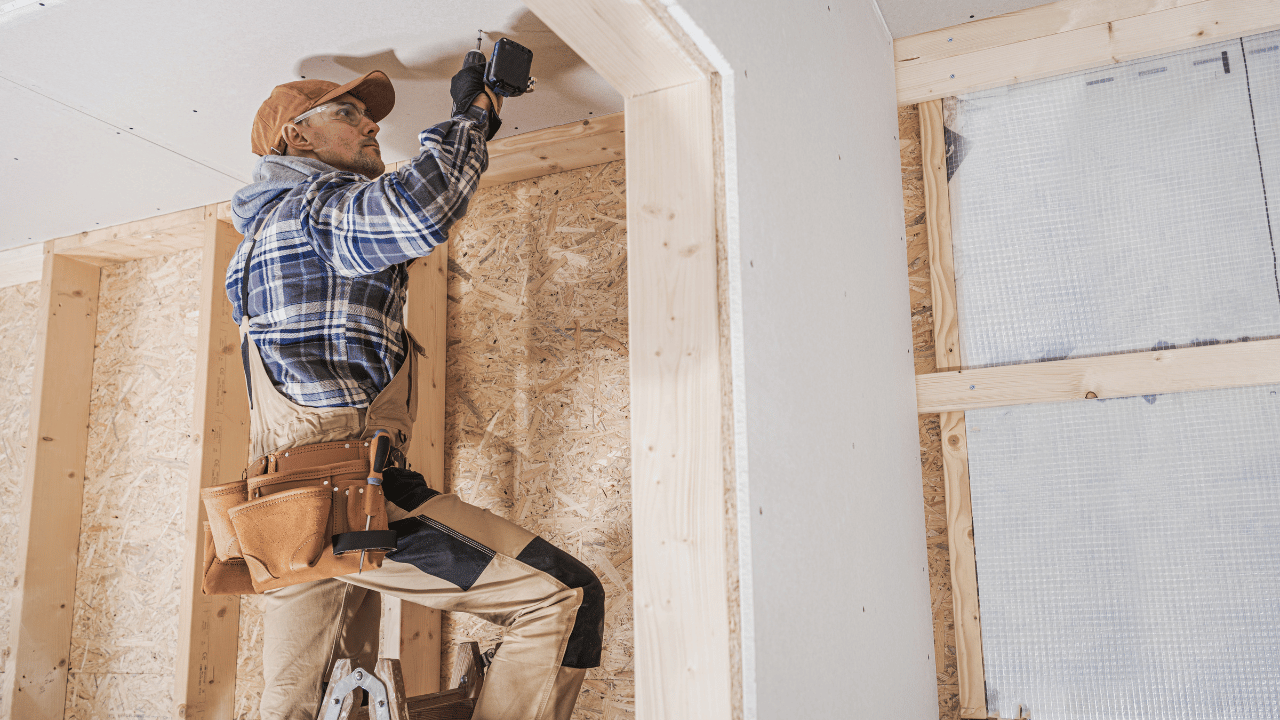
What is Drywall? Drywall, commonly referred to as gypsum board, is a sedimentary mineral utilized in a variety of applications such as plaster, fertilizers, and most prominently, construction. It’s processed into a powder, then shaped into sheets and enclosed in durable paper. These panels, often found in standard measurements of 4′ x 8′, can vary in thickness from 3/8″ to 5/8″. They are typically used to craft walls and ceilings in interiors of structures, ensuring they are protected from external conditions.
Estimating Your Drywall Needs
How to Determine the Amount of Drywall Required To gauge how much drywall is required for your project, you should first determine the square footage of both walls and ceilings. If you’re dealing with inclined walls, such as those in vaulted ceilings, measure the base’s height and length. Then, multiply these figures and halve the resulting number to get an accurate estimate.
Calculating Drywall Tape and Compound Requirements
How Much Tape Will You Need? For every 4′ x 8′ panel of drywall, approximately 12 feet of drywall tape is necessary. This means that a room measuring 200-square-feet would require close to 240 feet of tape. It’s essential to note that larger sheets, such as 4′ x 10′ and 4′ x 12′, are also available and might be more suitable for expansive projects. Always make sure to measure each interior corner and joint to ensure you get an accurate tape requirement.
Quantifying the Necessary Joint Compound For a single 4′ x 8′ drywall sheet, you would need roughly a third of a gallon of joint compound. This translates to an estimate of 7 gallons for a room that covers 200 square feet. However, the exact quantity will hinge on the size of the drywall sheet, the variety of the compound, and the volume of water utilized to dilute the mixture.
Permit Considerations for Drywall Installation
Is a Permit Mandatory? Whether or not a permit is required for drywall installation largely hinges on your location. In a majority of scenarios, you won’t need a permit merely to mend or replace damaged materials. However, if your project involves finishing spaces like attics or basements, or if you’re considering expanding the dimensions of your home, anticipate building permit costs ranging from $450 to $2,300.
Conclusion
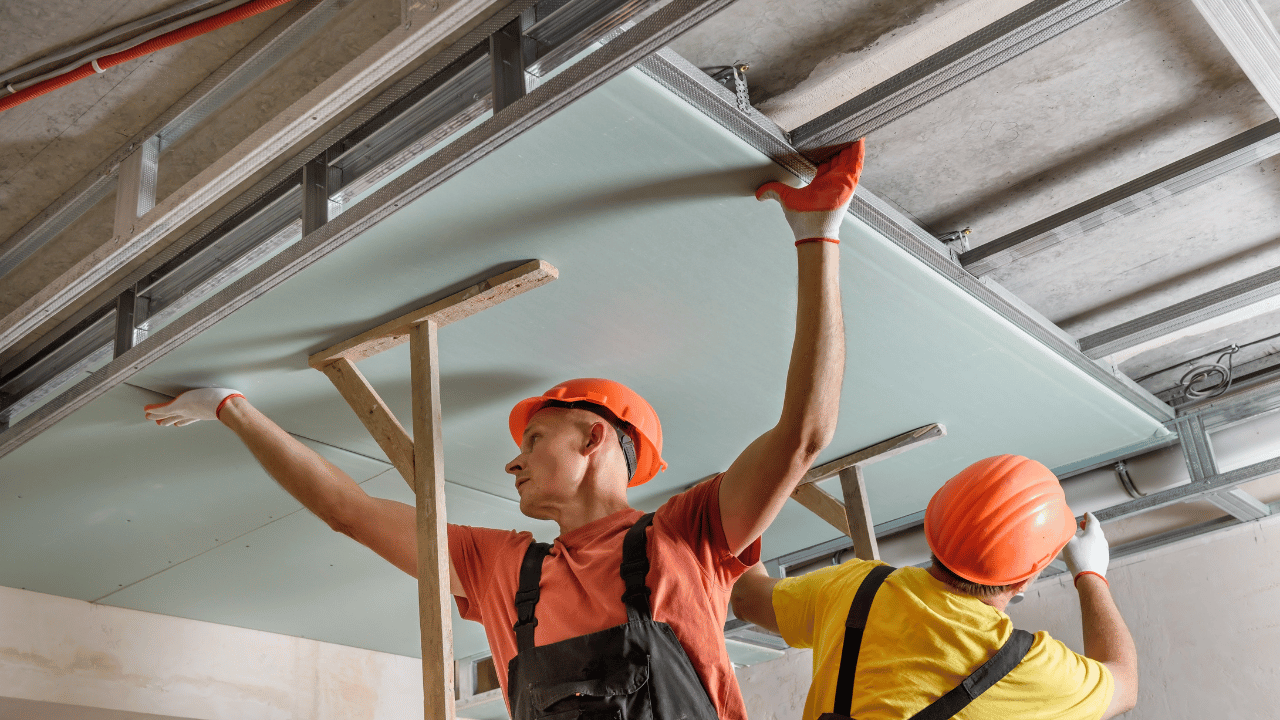
Navigating the world of home renovation and improvement can be a daunting journey. Among the myriad decisions homeowners face, understanding and budgeting for specific projects, such as drywall installation, stands out as a significant concern. Drywall, though often underappreciated, serves as the canvas upon which the aesthetics of a room are built. Its installation can not only enhance the visual appeal of your space but also add value to your property.
The extensive guide on Drywall Installation Cost Estimates has, hopefully, provided clarity and insights into what one can expect when embarking on such a venture. Costs can vary widely based on factors ranging from room dimensions and material choices to the desired level of finish. However, it’s evident that with thorough research, understanding market averages, and obtaining multiple quotes, homeowners can make informed financial decisions that align with both their vision and budget.
In essence, drywall installation is an investment. While initial costs can sometimes seem steep, the long-term benefits—both tangible in terms of property value and intangible in terms of aesthetic appeal and satisfaction—cannot be overlooked. A well-installed drywall can redefine a space, making it more inviting, functional, and aligned with a homeowner’s style and preference.
Moreover, this journey isn’t just about numbers and square footage. It’s about transforming houses into homes, converting basements into livable spaces, and restoring older properties to their former glory. It’s about choices, craftsmanship, and creating spaces that resonate with those who inhabit them.
In the end, as with many aspects of home improvement, the key lies in balance—balancing aspirations with budget, aesthetics with functionality, and immediate costs with long-term value. Armed with the knowledge from this guide, homeowners are better equipped to strike that balance, ensuring that their drywall installation project is both a successful and fulfilling endeavor.
